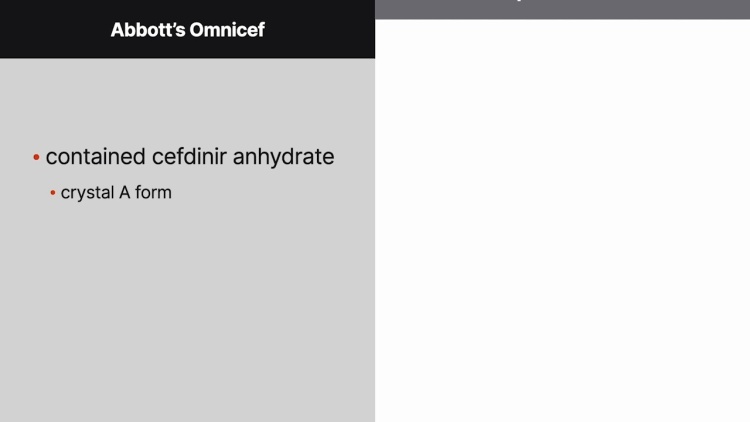Abbott Laboratories v. Sandoz, Inc.
United States Court of Appeals for the Federal Circuit
566 F.3d 1282 (Fed. Cir. 2009) (en banc)

- Written by Eric Cervone, LLM
Facts
Abbott Laboratories (plaintiff) owned a patent known as the ‘507 patent. Under the ‘507 patent, Abbott marketed crystalline cefdinir under the name Omnicef. The relevant claims of the ‘507 patent recited a series of steps by which crystalline cefdinir was obtainable. Lupin Pharmaceuticals had been approved by the Food and Drug Administration to sell a generic version of Omnicef. Lupin made its products with processes other than those claimed in the ‘507 patent. Lupin then sought a declaratory judgment of noninfringement against Abbott. The trial court granted judgment in favor of Lupin. The trial court categorized the relevant claims of the ‘507 patent as product-by-process claims. Several competing pharmaceutical companies (defendants) also sought to market generic versions of Omnicef. Abbott sought a preliminary injunction seeking to prevent these generic versions from going to market. The parties agreed to adopt the trial court’s claim construction from the Lupin case. However, the parties disagreed as to how to interpret some of the constructions of the trial court. The trial court in this new case, based on the claim construction from the trial court in the Lupin case, denied Abbot’s preliminary injunction. Abbott appealed.
Rule of Law
Issue
Holding and Reasoning (Rader, J.)
Dissent (Newman, J.)
What to do next…
Here's why 899,000 law students have relied on our case briefs:
- Written by law professors and practitioners, not other law students. 47,000 briefs, keyed to 994 casebooks. Top-notch customer support.
- The right amount of information, includes the facts, issues, rule of law, holding and reasoning, and any concurrences and dissents.
- Access in your classes, works on your mobile and tablet. Massive library of related video lessons and high quality multiple-choice questions.
- Easy to use, uniform format for every case brief. Written in plain English, not in legalese. Our briefs summarize and simplify; they don’t just repeat the court’s language.





